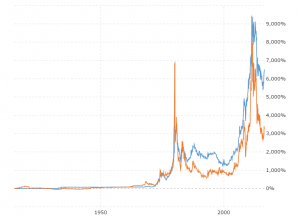What’s So Special About Pre-1934 Gold Coins?
As promised, we are picking up where we left-off last week, in talking about pre-1934 gold coins, and why right now, according at least to Barry Stuppler, President of the Accredited Precious Metals Dealers, a section of the Professional Numismatists Guild, the spread between melt value and market value on these coins is the smallest it has been for 20 years, suggesting that a gold rally could – yes, could, not is – be coming soon.
Why this emphasis on 1934, and why are coins from that period of such interest to collectors? The answer lies in the Great Depression, and in the actions of President Franklin D. Roosevelt. In April, 1933 he signed an Executive Order, number 6102, forbidding the, “Hoarding of gold coin, gold bullion, and gold certificates within the continental United States”. Gold had been legal tender in the USA since 1795, and it was restored to legal tender in 1974 by President Jimmy Carter, so what was Roosevelt trying to do? He had two goals. First, as the order says, to prevent the hoarding of gold. In times of economic uncertainty, and the Great Depression was certainly that, individuals and institutions look for ‘safe havens’ for their money, and gold has been that haven for centuries. But if we put our money into gold and bury it under the floorboards, we are not out spending that money, so the economy suffers. Roosevelt’s first goal was to force liquidation of that gold back into money, and so push it out into the wider market, to stimulate a very weak economy.
He had a second reason though. He wanted the US Mint to issue more money – what we today call ‘quantitative easing’. More money in circulation makes it easier to borrow, and so stimulates businesses, reviving a flagging economy. But he was restricted by the Federal Reserve Act of 1913, that forced the Federal Reserve to hold 40% of the total value of its Federal Reserve Notes in gold. (This section of the Act was removed in 1971, when the USA came off the gold standard). By forcing everyone to hand in their gold for its face value, as Roosevelts Executive Order did, the Federal Reserve would now have a lot more gold, so it could legally issue a lot more money.
There were exemptions for small amounts of gold coins, jewelry and so on, but the effect of this Order was that large quantities of gold coins were handed in and melted down. As a result, gold coins from that period are relatively rare – they were either held illegally or scattered across many small collections. The legal exemption was for $100 in coins, equivalent to about $6,500 today. Because of this attempt to salvage the country from the Great Depression, pre-1934 gold coins are highly desired by collectors, and their market value is high.
Which brings us back to Mr. Stuppler. His reasoning is that since these coins have a high market value based on relative rarity, that narrow spread he talked about might well be a barometer on where gold is heading. If you accept the logic of all this, he just might be on to something. As a foot-note, Barry Stuppler offered $50 million for the entire Berlin Wall in 1989, when it fell, planning to sell it in pieces as souvenirs. The bid was not accepted.








